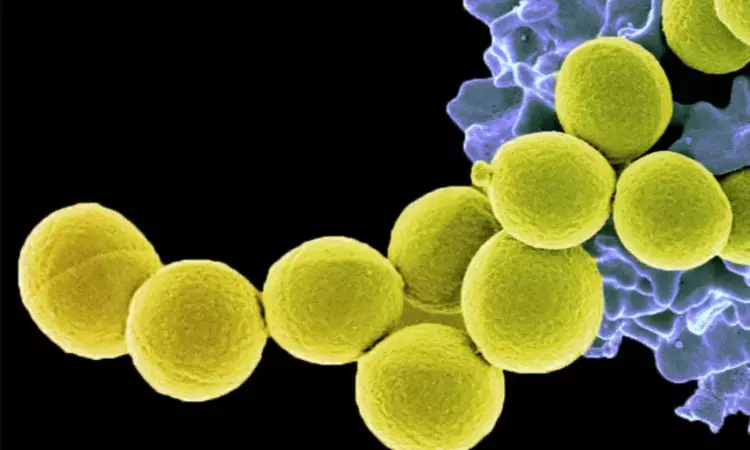- Home
- Medical news & Guidelines
- Anesthesiology
- Cardiology and CTVS
- Critical Care
- Dentistry
- Dermatology
- Diabetes and Endocrinology
- ENT
- Gastroenterology
- Medicine
- Nephrology
- Neurology
- Obstretics-Gynaecology
- Oncology
- Ophthalmology
- Orthopaedics
- Pediatrics-Neonatology
- Psychiatry
- Pulmonology
- Radiology
- Surgery
- Urology
- Laboratory Medicine
- Diet
- Nursing
- Paramedical
- Physiotherapy
- Health news
- Fact Check
- Bone Health Fact Check
- Brain Health Fact Check
- Cancer Related Fact Check
- Child Care Fact Check
- Dental and oral health fact check
- Diabetes and metabolic health fact check
- Diet and Nutrition Fact Check
- Eye and ENT Care Fact Check
- Fitness fact check
- Gut health fact check
- Heart health fact check
- Kidney health fact check
- Medical education fact check
- Men's health fact check
- Respiratory fact check
- Skin and hair care fact check
- Vaccine and Immunization fact check
- Women's health fact check
- AYUSH
- State News
- Andaman and Nicobar Islands
- Andhra Pradesh
- Arunachal Pradesh
- Assam
- Bihar
- Chandigarh
- Chattisgarh
- Dadra and Nagar Haveli
- Daman and Diu
- Delhi
- Goa
- Gujarat
- Haryana
- Himachal Pradesh
- Jammu & Kashmir
- Jharkhand
- Karnataka
- Kerala
- Ladakh
- Lakshadweep
- Madhya Pradesh
- Maharashtra
- Manipur
- Meghalaya
- Mizoram
- Nagaland
- Odisha
- Puducherry
- Punjab
- Rajasthan
- Sikkim
- Tamil Nadu
- Telangana
- Tripura
- Uttar Pradesh
- Uttrakhand
- West Bengal
- Medical Education
- Industry
Infective endocarditis caused by S. aureus after TAVR tied to high in-hospital and late mortality: Study

Canada: A recent study in the Canadian Journal of Cardiology showed that Staphylococcus aureus (SA) infective endocarditis (IE) represents 25% of IE cases after TAVR and is tied to very high in-hospital and late mortality. The presence of some features determined a higher possibility of SA IE and could help to align the selection of an early antibiotic regimen.
SA has been studied extensively as a causative microorganism of surgical prosthetic-valve IE. However, there is not much evidence on SA IE after transcatheter aortic valve replacement (TAVR). To fill this knowledge gap, Josep Rodés-Cabau, Québec Heart & Lung Institute, Laval University, Québec City, Québec, Canada, and colleagues aimed to evaluate the clinical characteristics, management, and in-hospital and late outcomes of patients with SA IE after TAVR.
For this purpose, the researchers obtained data from the Infectious Endocarditis After TAVR International Registry that included patients with definite IE after TAVR from 59 centers in 11 countries. According to microbiologic etiology patients were divided into 2 groups: non-SA IE vs SA IE.
Following were the study's main findings:
- About 25% of cases of IE after TAVR had SA as a causative microorganism.
- Patients with SA IE presented TAVR-related complications (acute renal failure, stroke, major bleeding, and sepsis) more frequently and had longer intensive unit care hospitalizations after TAVR.
- Periprocedural TAVR major bleeding or sepsis, neurologic symptoms or systemic embolisms at admission, and IE with signs of cardiac device involvement (other than the TAVR prosthesis) were associated with SA IE, and the presence of such factors (particularly in combination) at the index IE hospitalization determined a high likelihood of SA IE (> 80% in patients with -3 factors).
- SA IE was associated with a higher incidence of IE-related complications (compared with non-SAIE) and a very high in-hospital (close to 50%) and follow-up (> 70% at 2 years) mortality rates.
- The lack of surgical management at index IE hospitalization among SA IE patients determined an increased mortality risk.
"Surgery at index SA IE was associated with improved outcomes, and its role should be evaluated in future studies," the authors wrote.
Reference:
The study titled, "Infective Endocarditis Caused by Staphylococcus aureus After Transcatheter Aortic Valve Replacement," was published in the Canadian Journal of Cardiology.
Dr Kamal Kant Kohli-MBBS, DTCD- a chest specialist with more than 30 years of practice and a flair for writing clinical articles, Dr Kamal Kant Kohli joined Medical Dialogues as a Chief Editor of Medical News. Besides writing articles, as an editor, he proofreads and verifies all the medical content published on Medical Dialogues including those coming from journals, studies,medical conferences,guidelines etc. Email: drkohli@medicaldialogues.in. Contact no. 011-43720751


